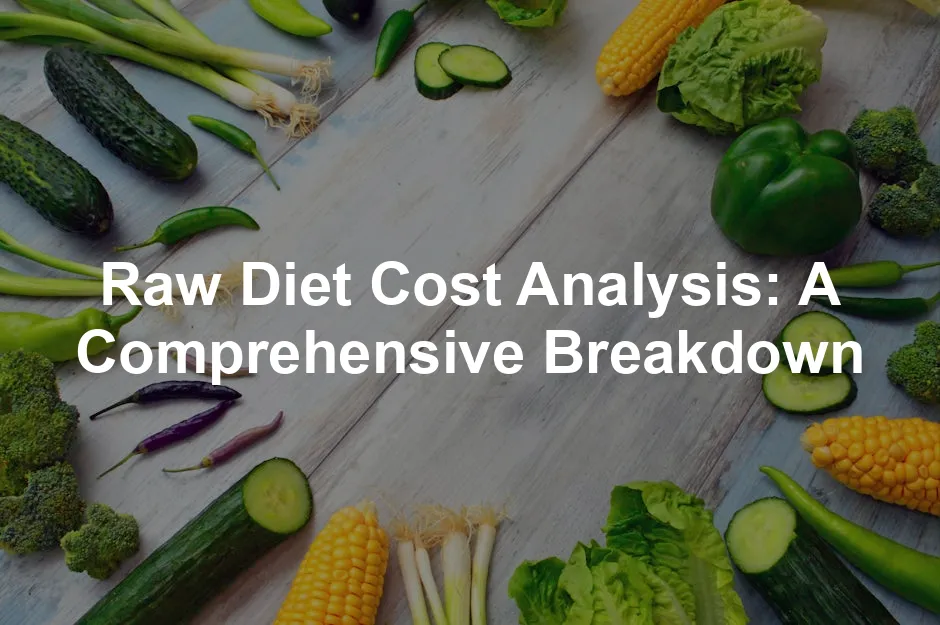Introduction
Raw diets are gaining popularity among pet owners. Many choose this path for its perceived health benefits. Pets on raw diets often show improved digestion and energy levels. However, it’s crucial to understand the financial implications of this choice compared to traditional pet food. This article aims to analyze the costs associated with raw diets, helping you make an informed decision for your furry friend.
To help you in your raw feeding journey, consider picking up a Raw Dog Food Cookbook. This book offers delicious recipes and tips to create balanced meals for your pet, ensuring they get all the nutrients they need while enjoying their food!
Summary and Overview
A raw diet involves feeding pets uncooked meats, bones, and organs. Advocates believe it leads to healthier pets. Benefits often cited include better coat condition and reduced allergies. Yet, the cost of raw diets varies significantly.
Several factors influence these costs. Ingredient quality is a major factor. Sourcing fresh, high-quality meat can be pricey. Preparation methods also affect expenses, especially for homemade diets. Additionally, local availability impacts pricing.
Long-term health effects warrant attention. Many pet owners report fewer vet visits after switching to raw diets. This reduction can lead to cost savings in preventive care. Statistics show a steady rise in raw diet adoption, highlighting its growing appeal. Understanding these costs and benefits is essential for pet owners considering this switch.
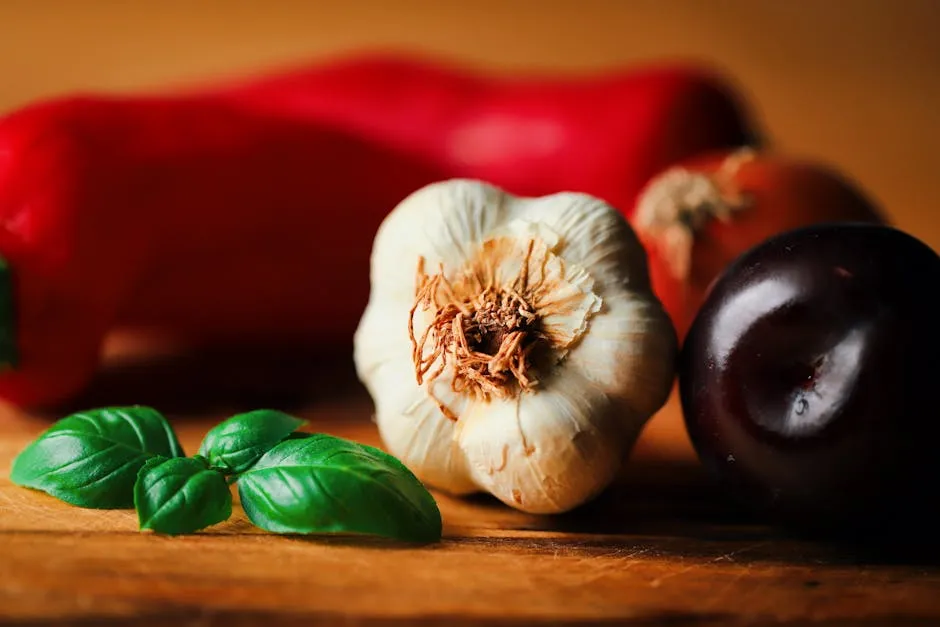
Understanding the Cost of Raw Diets
A raw diet primarily consists of uncooked meats, bones, and organs. Pet owners often choose between commercial and homemade options. Commercial raw diets offer convenience, while homemade diets allow for more control over ingredients. However, both types can vary widely in cost.
Several key factors influence the price of raw diets. Ingredient quality is crucial. High-quality meats and fresh produce can drive up costs. Geographic location also plays a role, as local supply and demand affect pricing. Additionally, preparation methods can add to expenses, particularly for homemade diets.
On average, raw diets can cost between $2.50 to $5.50 per pound. In contrast, traditional kibble typically ranges from $1.00 to $2.00 per pound. While raw diets may seem more expensive, many pet owners report improved health outcomes that can offset these costs over time.
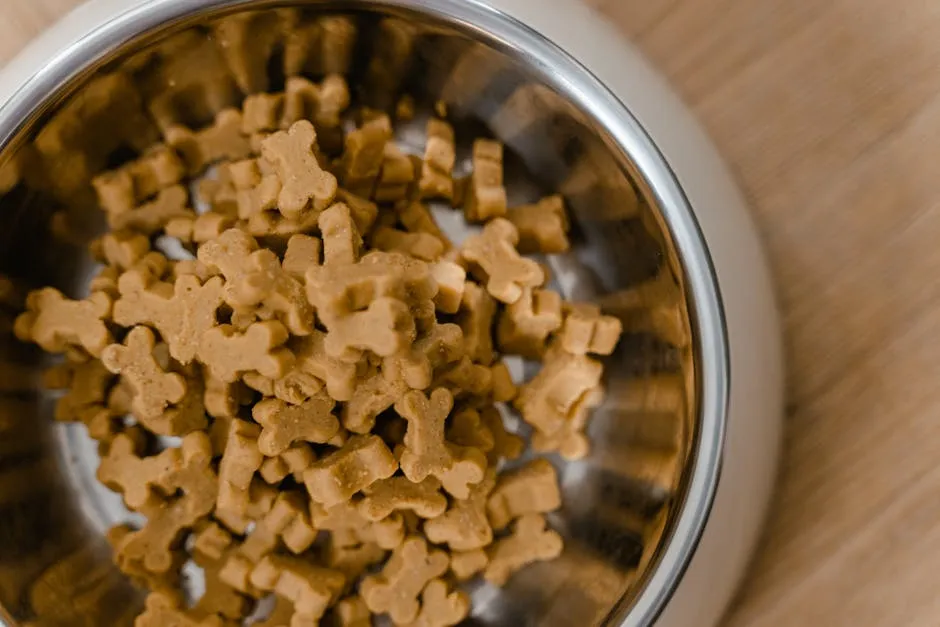
Cost Breakdown: Raw vs. Kibble
When comparing raw diets to kibble, the cost per serving varies significantly. For example, feeding a 50-pound dog a raw diet may cost around $2.93 per day. Kibble, on the other hand, averages about $1.30 daily. While raw diets have a higher upfront cost, they often provide better nutritional value.
Nutritional differences can affect overall expenses. Raw diets generally offer higher bioavailability of nutrients, which means pets absorb more from their food. This can lead to fewer health issues, potentially saving on vet bills. For instance, a raw meal may cost about $2.40 compared to just $0.33 for kibble.
Statistics reveal that raw diets can be more economical in the long run. While the initial costs might be higher, the long-term benefits, including better health and reduced veterinary visits, can lead to substantial savings.
Now, if you’re considering switching your pet’s diet, take a moment to calculate your current food expenses. You may find that investing in a raw diet is not only beneficial for your pet’s health but also for your wallet in the long run.

Factors Influencing Raw Diet Costs
When considering a raw diet for your pet, several key factors influence the overall costs. First, ingredient quality plays a significant role. Higher-quality meats, like grass-fed beef or organic chicken, often come with a higher price tag. Cheaper options may be more accessible but could compromise on nutritional value.
Sourcing is another important aspect. Local availability can impact prices. If you live in an area with limited access to fresh meats, you may need to pay more for shipping or travel to find quality ingredients. Conversely, connecting with local farmers or butchers can yield better prices.
Geographical location also affects costs. In urban areas, raw ingredients may be more expensive due to higher demand and shipping fees. In contrast, rural areas might offer more affordable options due to local farms.
Pet size and dietary needs significantly impact costs as well. Larger dogs require more food, which naturally increases expenses. Additionally, pets with specific dietary requirements may need specialized ingredients, further driving up costs. For instance, a dog with allergies may need limited-ingredient diets that can be pricier.
Lastly, buying in bulk can help reduce expenses. Purchasing larger quantities often lowers the cost per meal. By planning ahead and sourcing wisely, you can manage your budget while providing quality nutrition for your furry companion.

Speaking of bulk, consider investing in a Kibble Storage Container to keep your pet’s food fresh and safe from pests. It’s a simple solution that can save you money in the long run!
Long-Term Financial Considerations
Investing in a raw diet can lead to significant long-term savings through improved pet health. Many pet owners report fewer health issues after switching from kibble to raw food. Common ailments like obesity, skin allergies, and dental problems are often linked to lower-quality diets, which can result in high veterinary bills.
Statistics reveal that pets fed kibble face increased risks for health problems. For example, studies show that about 80% of dogs will develop dental disease by age three if fed a kibble diet. Treatment for such conditions can cost upwards of $1,000 annually. In contrast, raw diets often promote better dental health, reducing the need for expensive dental cleanings. Understanding canine dental health and home care tips can help pet owners make informed choices about their pet’s nutrition.
Good dental health is crucial for dogs, and raw diets can contribute to this. Understanding canine dental health and home care tips can provide valuable insights for pet owners.
Moreover, a study indicated that feeding a raw diet could decrease the chances of serious conditions like diabetes and cancer. With cancer treatment averaging around $6,500, the potential savings from a raw diet are considerable.
Preventive healthcare is another financial benefit. By investing in quality nutrition, you may find that your pet requires fewer vet visits. Regular check-ups and emergency visits can quickly add up, leading to substantial monthly expenses.
In summary, while the initial costs of raw feeding may be higher, the long-term health benefits can outweigh these expenses. By preventing health issues and reducing vet bills, a raw diet may prove to be a cost-effective choice for your beloved pet.
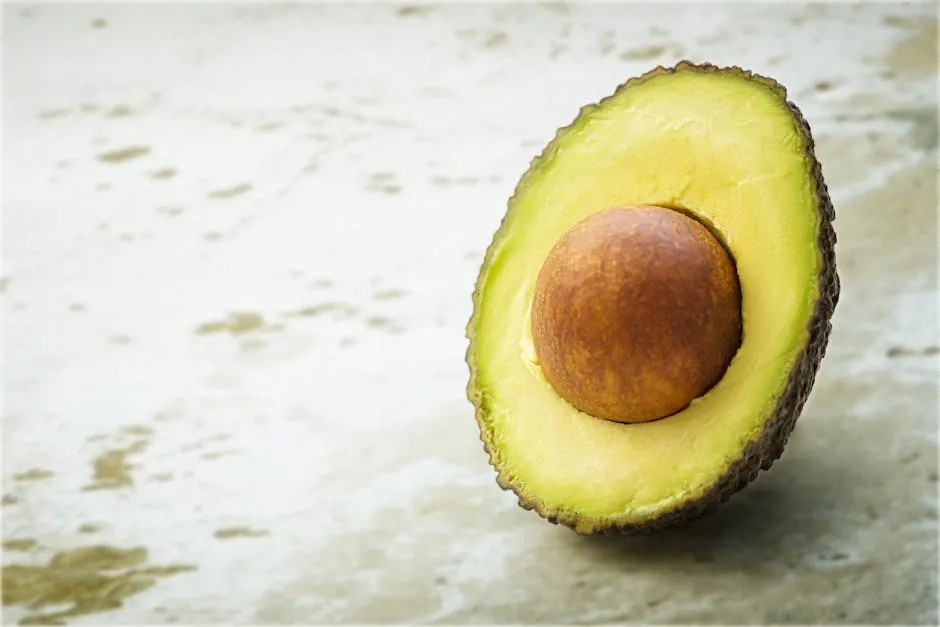
Cost-Effective Strategies for Raw Feeding
Switching to a raw diet can seem daunting. But, it doesn’t have to break the bank! Here are some practical tips to help you save money.
First, consider bulk buying. Purchasing larger quantities can significantly reduce your overall cost per meal. Many suppliers offer discounts for bulk orders. You can also split purchases with friends or fellow pet owners to save even more.
Local sourcing is another smart move. Establish relationships with local butchers or farmers. They may offer fresh meat at lower prices than retail. Plus, you’ll support local businesses and get better quality ingredients!
Joining a pet food co-op can also help. These groups often pool resources to buy in bulk, leading to lower prices for members. Look for co-ops in your area that specialize in raw pet food.
Don’t forget about seasonal buying. Prices for certain meats drop during peak seasons. For example, turkey is often cheaper during the holidays. Stock up during these times and freeze portions for later use.
Lastly, get creative with your meals. Incorporate affordable protein sources like Organic Chicken Neck Dog Treats or turkey parts. These options are nutritious and cost-effective.
Now, we’d love to hear from you! What cost-saving tips do you have for raw feeding? Share your thoughts in the comments below!

Quality vs. Price: What are You Really Paying For?
When it comes to pet food, quality matters. But what does that mean for your wallet? Higher-priced raw diets often reflect better ingredient quality. This can lead to significant health benefits for your pet.
Many pet owners find that investing in premium ingredients pays off. For instance, high-quality proteins can enhance digestion and overall health. Healthier pets typically see fewer vet visits, resulting in long-term savings.
It’s essential to consider the nutritional value of what you’re buying. Cheaper options may contain fillers or lower-quality meats. While they may save you money upfront, they can lead to health issues down the line.
Data shows that pets on high-quality diets often experience fewer health problems. This can include conditions like obesity, dental issues, and more. The costs associated with treating these issues can pile up quickly.
In short, the price you pay for raw food can be viewed as an investment in your pet’s health. While it might be tempting to go for the cheapest option, remember that you often get what you pay for. Choosing quality ingredients can mean fewer vet bills and a healthier, happier pet.
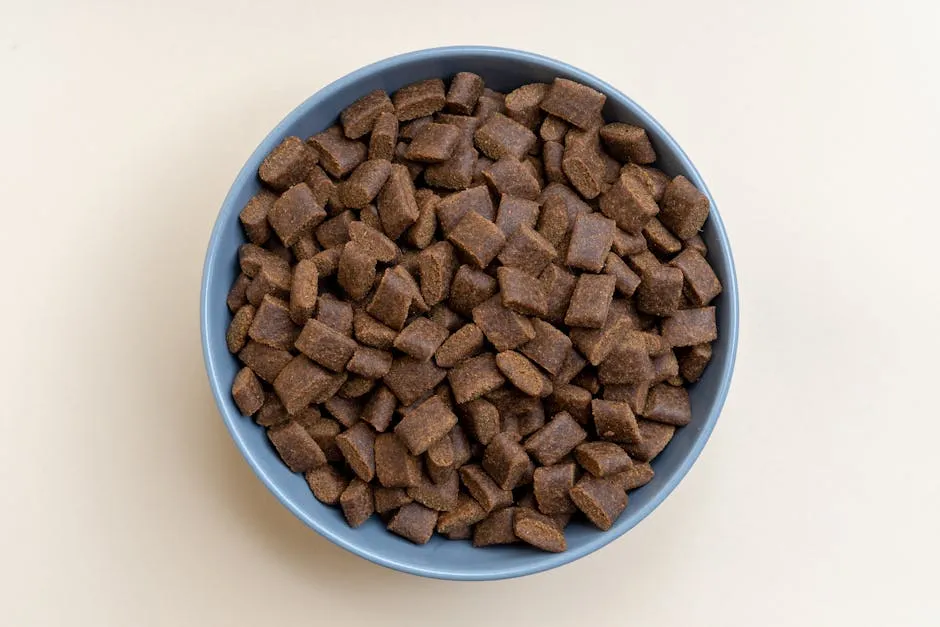
Speaking of quality, consider using a Dog Food Scale to measure your pet’s portions accurately. It’s a small investment that can make a big difference in their diet!
How do you view the relationship between quality and price in pet food? Let us know your experiences in the comments!
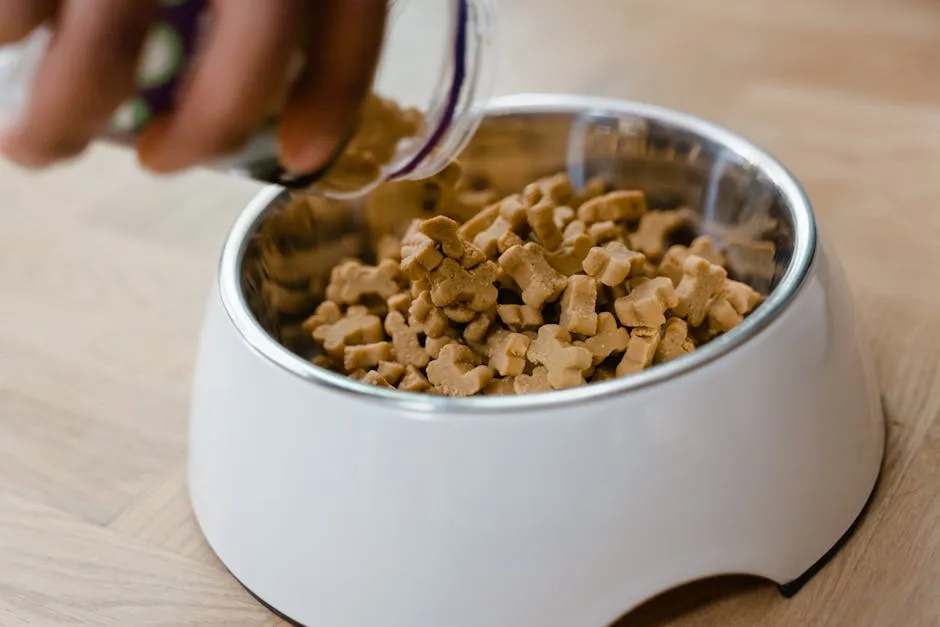
Comparing Homemade Raw Diets to Commercial Options
When it comes to feeding your pet a raw diet, you often face a choice: homemade or commercial options. Each has its pros and cons, and understanding these can help you decide what’s best for your furry friend.
Homemade raw diets offer complete control over ingredients. You know exactly what your pet is eating, allowing for customization based on dietary needs. This can be particularly beneficial for pets with allergies or sensitivities. However, preparing these meals can be time-consuming and requires careful planning to ensure nutritional balance.
On the other hand, commercial raw foods provide convenience. They come pre-packaged, saving you time and effort. Many brands ensure their products are nutritionally balanced, taking the guesswork out of meal prep. However, these options can be pricey, and not all commercial products are created equal. Some may use lower-quality ingredients to cut costs.
Cost analysis reveals significant differences between the two. On average, a homemade raw diet can cost around $2.50 to $4.00 per pound, depending on the ingredients used. In contrast, commercial raw diets typically range from $5.00 to $7.00 per pound. While the upfront cost of commercial options is higher, the convenience factor might justify the price for some pet owners.
Ultimately, the decision comes down to your lifestyle, budget, and your pet’s specific needs. Whether you opt for homemade or commercial raw diets, ensuring your pet receives balanced nutrition should be your top priority.
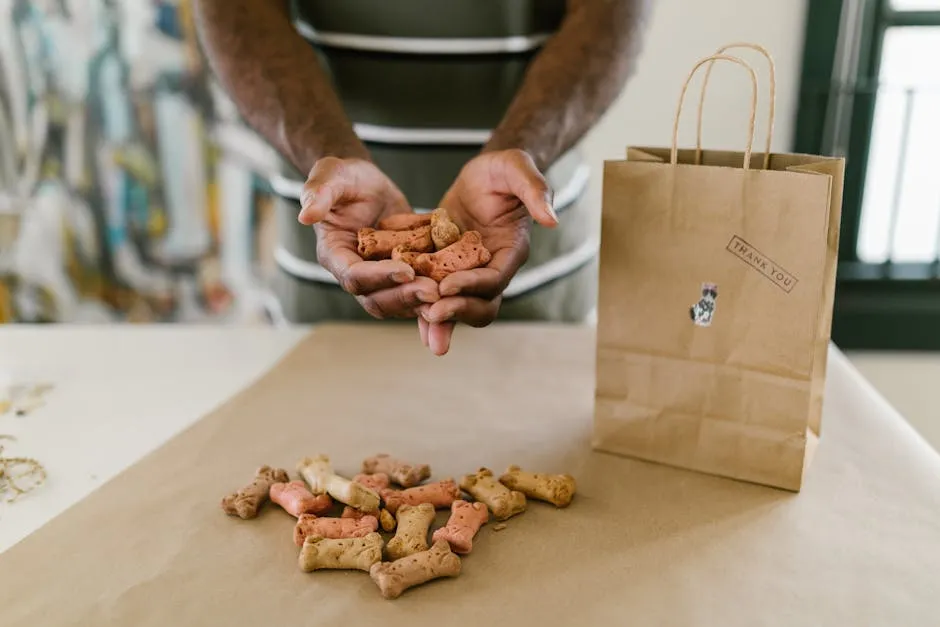
Conclusion
In conclusion, transitioning to a raw diet for your pet involves weighing both costs and benefits. While homemade options may save you money initially, commercial diets offer convenience that can save time. It’s crucial to consider both short-term expenses and the long-term health impacts of your choice. Investing in quality nutrition could lead to fewer vet visits and healthier pets.
Take a moment to evaluate your current pet food expenses. Consider the potential benefits of transitioning to a raw diet for your furry friend. The right choice can make a significant difference in their overall well-being.
FAQs
What is the average cost of a raw diet for pets?
The average cost of a raw diet varies, typically ranging from $2.50 to $7.00 per pound, depending on whether it’s homemade or commercial.
How does the cost of raw food compare to kibble?
Raw food generally costs more than kibble, with kibble averaging $1.00 to $2.00 per pound.
Can I make a raw diet at home to save money?
Yes, a homemade raw diet can be cost-effective, averaging about $2.50 to $4.00 per pound.
What are the health benefits of feeding a raw diet?
Raw diets can lead to better digestion, improved coat condition, and reduced allergies in pets.
Are there any hidden costs associated with raw feeding?
Hidden costs may include additional expenses for supplements, equipment, or potential vet visits if not properly balanced.
Please let us know what you think about our content by leaving a comment down below!
Thank you for reading till here 🙂
And while you’re at it, consider picking up a Dog Training Book to help your furry friend learn the ropes of good behavior. After all, a well-trained dog is a happy dog!
Also, if you’re planning to travel with your pet, a Dog Car Seat Cover can keep your car clean while keeping your pet safe and comfortable on the road!
All images from Pexels

